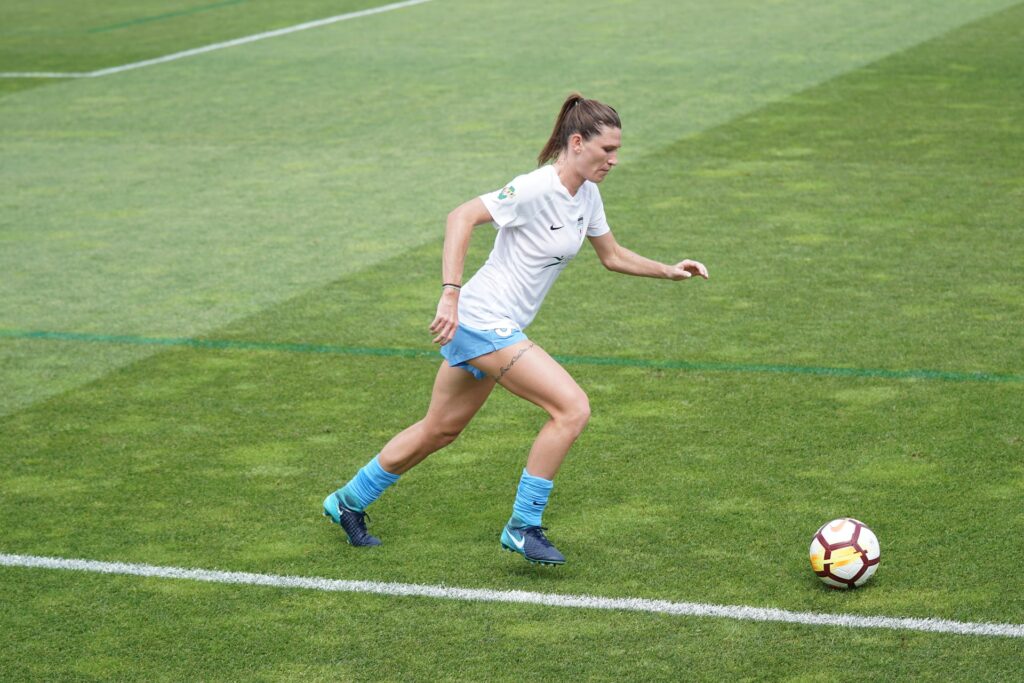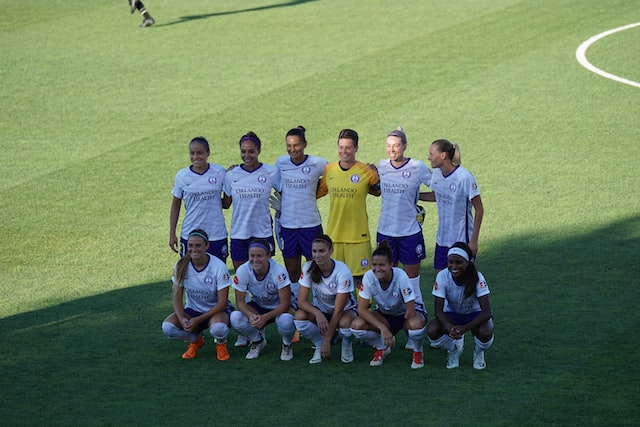Selecting your side’s formation can be a headache. How you should line up depends on your team’s capabilities and the anticipated threat that opponents will pose.
So what does it tell us when a side sets up in a 5-3-2 formation? Is it always defensive? There’s more than meets the eye in this formation which has been used for decades.
What is 5-3-2 in soccer?
The 5-3-2 formation suggests a team will have 5 defenders, 3 midfielders, and 2 attackers.
With this rudimentary information alone, you can’t tell exactly how a team will operate on the field. Width, overlapping, the use of a sweeper, and midfield shape are among the intricacies which require greater explanation and tactical tweaking.
In modern soccer, a 5-3-2 formation is considered a defensive setup. While few managers would begin a game in such a formation, it can certainly solidify a unit in the later stages when required.
When should you use a 5-3-2 formation in soccer?
When you’re winning by a narrow margin with not much time remaining, the 5-3-2 formation can be an effective strategy to see out a game.
Because the formation is easily converted from a more attacking 3-5-2, it takes minimal tweaking to go from the 3-5-2 to a 5-3-2.
If you know your opponent wants to soak up pressure and then counter-attack at pace, the 5-3-2 formation might be a good one to employ. The situation is a far more challenging one if only two center-backs are faced with an onslaught; to stifle this attack, the third central defender can cover any bursting overlaps that are made.
The modern central defender is adept at close control and spreading the ball around. For a team who wants to maintain possession, the 5-3-2 formation provides you with an extra player to string passes together within an area where the opposition is likely to be more willing to concede possession in.
Which professional soccer teams use a 5-3-2 formation?
Famously, the Euro ‘96 champions Germany won the tournament by employing the 5-3-2 formation to a tee. Then-manager Berti Vogts addressed weaknesses in the German line-up by building from the back and relying on his attacking quality to eventually shine through. Their contain-and-frustrate policy became a prototype for tournament soccer.
Over the last 5 years, the Netherlands has frequently operated in a 5-3-2 system. Unfortunately for the Dutch, this hasn’t resulted in silverware yet, but one of Frank de Boer’s reasons behind lining up in this formation is interesting: so his forwards didn’t need to retreat as much.
In a 4-3-3, for instance, at least one of the attacking trio (usually the two players out wide) needs to contribute to defensive duties. However, de Boer doesn’t feel this is necessary when you have 8 players positioned in midfield and defense.
A more recent example of its use was when Diego Simeone’s Atlético de Madrid traveled to Manchester City in their 2022 Champions League quarter-final first leg.
Knowing that Manchester City, under the stewardship of the irrepressible Pep Guardiola, had arguably the best possession-based team in the world at the time, Simeone structured his side in a 5-3-2 system which limited the home side to a slender 1-0 lead going into the second leg. This game wasn’t necessarily about winning, it was about staying alive, and the 5-3-2 system did just the job for Atleti.
Is 5-3-2 better than 5-4-1 in soccer?
This will depend entirely on your squad’s capabilities, but, on the face of it, a 5-3-2 presents tacticians with more flexibility than a 5-4-1.
One of the concerns within a 5-4-1 formation is that important areas can become more congested. Sometimes a lot of bodies utilized to overwhelm the opposition isn’t a bad thing, but hypothetically, if you have three central defenders and three central midfielders all congregating in the same zone, it can be difficult to assign one another responsibility for tracking runners or intercepting passes. That’s not to say it can’t work, just that perfecting it would take a lot of work in training.
This shifting of responsibility and the potential for overcomplication is less likely to be a problem in a 5-3-2 because of the reduced numbers in midfield.
Simultaneously, a 5-4-1 can leave your attacker isolated, resorting to chasing hopeful punts forward and lost causes. This could easily result in exhaustion for the attacker and them simply being easier to mark out of the game. A strike partner can alleviate some issues, as can the midfielders who join attacks.
Therefore, if you envisage the layout of your team from a birdseye view, you could be congested at the back but have insufficient numbers up top. There have been occasions where this has been successful but don’t expect much in the way of an outlet once you’re back on the ball.
Overlapping is possible in a 5-4-1, of course, but having four midfielders would naturally push two of them out wide, attracting the attention of the opposition and restricting the space for wing-backs to work in. A diamond midfield setup is another way of easing that congestion out wide.
Is 5-3-2 a defensive soccer formation?

Yes, 5-3-2 is typically a defensive formation in soccer. Should a team want to become more adventurous, they would often revert to a 3-5-2 instead, with the full-backs becoming wing-backs who perform both defensive and attacking duties.
Despite their interchangeability, the 5-3-2 and 3-5-2 formations are different.
In the more traditional understanding of the 5-3-2 formation, full-backs prioritize their defensive work over the attacking forays.
However, many modern managers like to use three midfielders narrowly in a 5-3-2 to allow space for their full-backs, or wing-backs as they could be referred to in an attacking sense, to bomb forward down the flanks to support attacks. These midfielders will help out wide, too, but their main focus is central.
Therein lies the flexibility of a 5-3-2 to become a 3-5-2 when you need it to.
No formation alone is good or bad. Some, like the 5-3-2, might be viewed as a “negative” approach, but if it wins you the game, then it’s a successful one.
Which is the most important position in a 5-3-2 soccer formation?
Your outer center-backs covering for the right-back and left-back, respectively, if they have joined the attack, are crucial.
Your most central center-back can act as the sweeper to mop up any errand balls, but your other two center-backs will need to keep a keen eye on the flanks should a counter-attack commence. This is less of a focus for the center-backs if your widest defenders are employed as full-backs.
Typically, the center-back in the middle of the defense will organize the troops and ensure that everything is positionally working. Having somebody who can lead and commands respect in the heart of the defense is key to successfully defending with five at the back.
Should you use 5-3-2 when you’re playing against a better team?
A 5-3-2 could be effective if the side you’re facing is superior to yours, but there are other risks associated with setting up this way.
You’ll have a sufficient number of defenders to nullify oncoming attackers, but is your side able to hold off the opposition for 90 minutes? With heightened focus and good organization, you can defend effectively in this formation while still posing some attacking threat of your own.
Bear in mind that by having a fifth defender, you’re taking a player out of either your midfield or attack, thus reducing your attacking threat somewhat.
This is where managers like to get creative with their wing-backs, making them an integral part of the attacking plan. Again though, the temptation to keep the left-back and right-back deep might prove too strong for some managers against strong opponents.
For more information on this topic, check out our recent article where we introduce the best soccer formations for weak teams.
Recap: 5-3-2 soccer formation explained
The 5-3-2 setup is an effective formation that provides solidity yet allows for flexibility should managers wish to manipulate their setup.
Remaining aware of the formation’s limitations and advantages helps you successfully manage a game and use the 5-3-2 formation at the optimal moment.
Keen to learn more about specialist soccer lineups? Check out our recent post on the best 6v6 soccer formation for small-sided matches.

